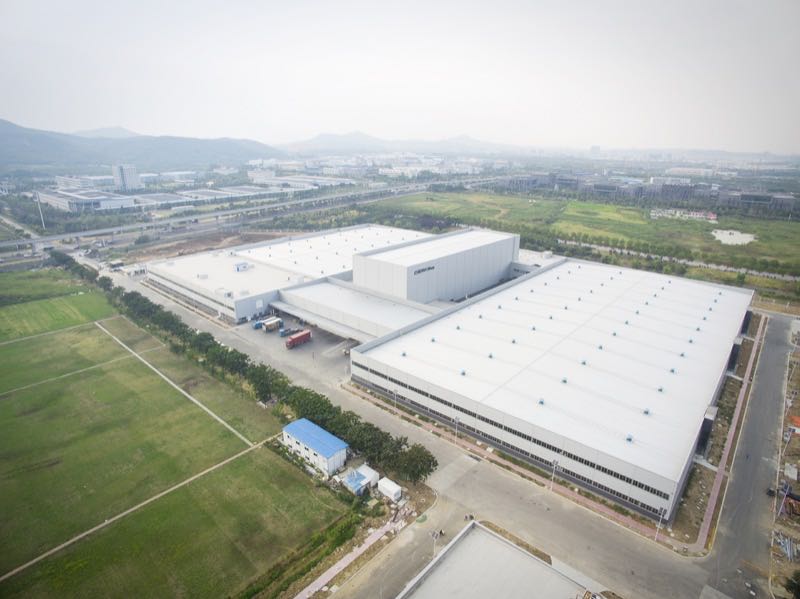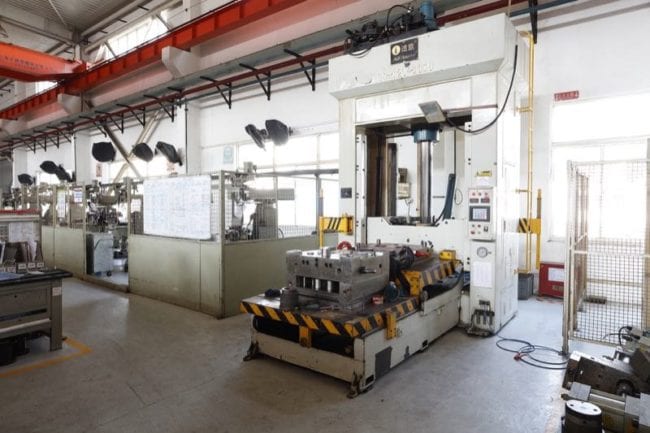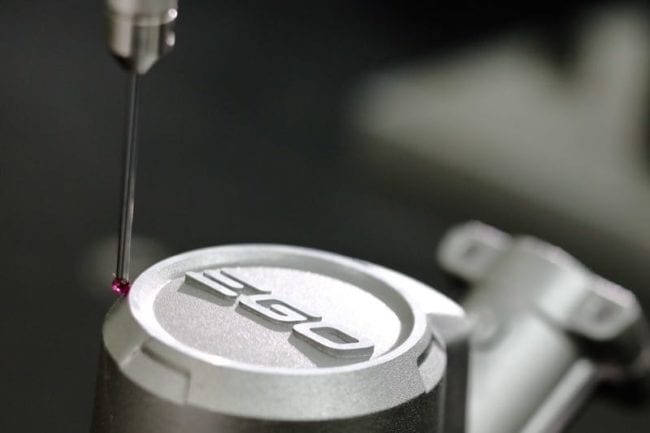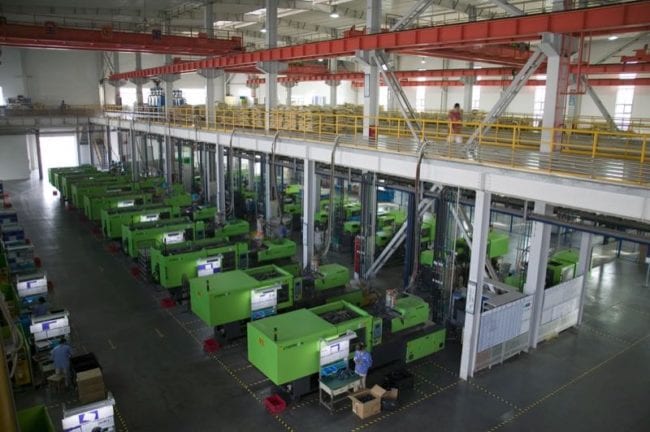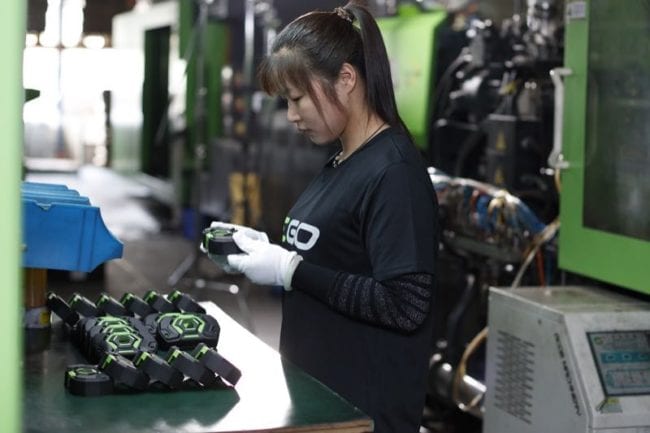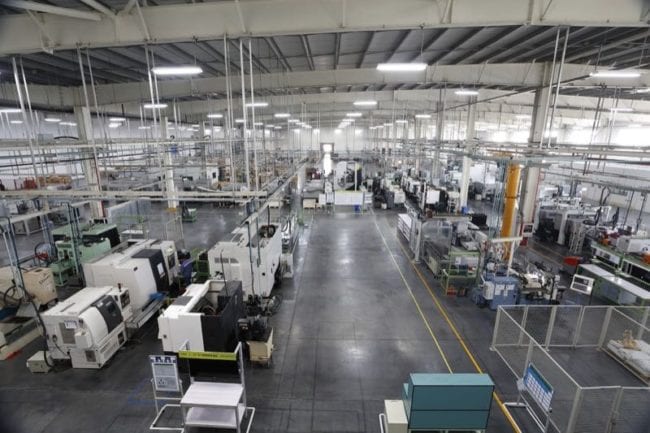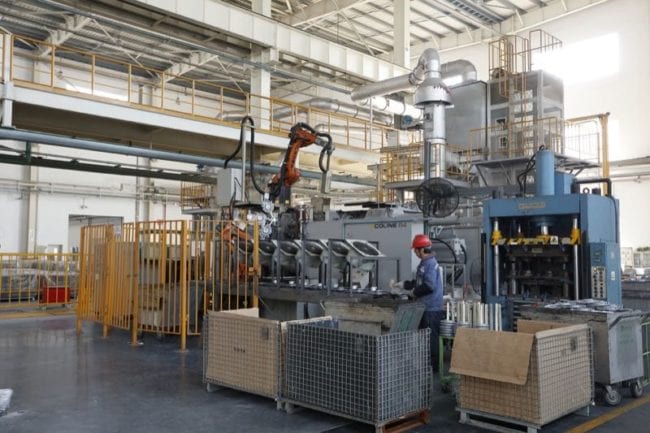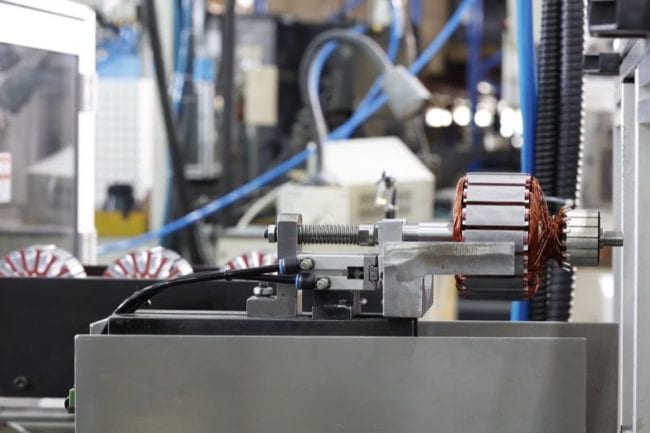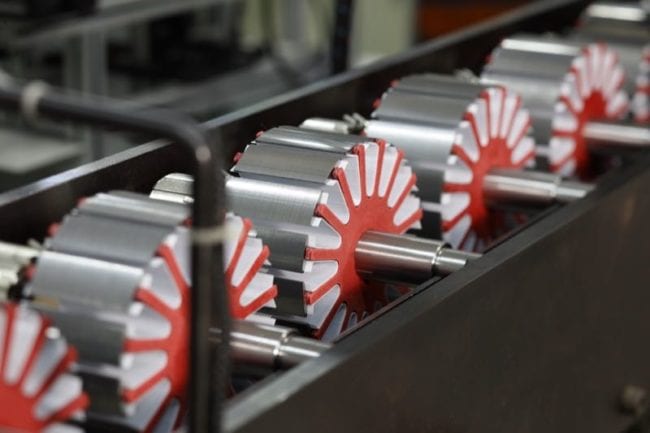While the Chervon Green Factory opened in July 2015 and has over 3 million square feet of production space, their original factory was where we started our tour. This is a 2.2 million square foot facility that was constructed back in 2006. The Chervon factory tour was led by Mr. Ke Zuqian (GM of Chervon, pronounced “Mr. Kay”) who currently runs the factories. After our Chervon Research and Development tour, this was the next logical stop.
As a company, Chervon is focused on vertical integration from its research and development to manufacturing, final assembly, and quality control. In fact, Chervon is investing a lot in all of these areas. The key parts of manufacturing include the tooling workshop which makes anything to do with the tool housings, internal electronics, and motors.
Chervon Factory Tour Tooling and Machining
Tooling involves more than just making metal molds. It’s a detailed process for ensuring the materials used correctly fill the molds and ensure proper material fit in the final product.
In the grinding room, we saw CNC machines water cutting the tools—and other items used to create the tools which make the tools. CAD rooms had engineers designing the actual digital models used for setting up the tooling for the products that are built in the factory. There’s a lot more involved than we ever would have thought. Computers are used to simulate how the mold process will work with the materials. Different colors represented different risk factors for deformation, and the design can be optimized for both results and efficiency. A CAM (computer aided machining) is then used to determine the optimized machining methodology for making the part.
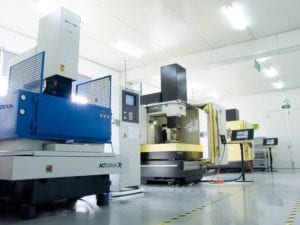
The final step is called the “sparking” process. Heat treatment for the cavity and insert is important in order to ensure the tooling holds up to constant and long term use. A manufacturing tool is only good until it no longer produces reliable components. Sometimes, when manufacturing a manufacturing tool, Chervon leaves just a bit of extra material to compensate for potential deformation—then they can use the sparking process to get to the final desired specifications.
One of the tools we got to examine on this leg of the Chervon factory tour was the insert and cavity tools for the EGO 56V 5.0Ah battery pack—this is the battery that comes with the new EGO LB5300 56V blower.
Plastic Injection Workshop
Chervon uses more than 60 injection machines. They have a centralized drying and conveying system that keeps everything moving and aids in the production process. Changing out a machine from one mold to the next type of mold can be done almost instantly just by moving the linking from one machine to another. It’s a well thought-out system that offers considerable flexibility and productivity enhancements.
For larger parts, Chervon uses robots to pick and place parts out of the machines which makes more sense since human workers would require too much exertion and couldn’t perform the duties as quickly (or as accurately). For smaller parts, standard methods using people is much more effective and practical.
In Chervon’s quality management system, color management is particularly difficult. The human eye is notoriously easy to fool with color graduation. To combat this, Chervon uses a set of controlled standard “chips” (color swatches) that are good for 10 months and represent the upper and lower limits of the color for the particular part. These color chips also feature multiple textures, so you can observe the part accurately regardless of what texture of plastic or polypropylene part on which the color appears. As you can imagine, trying to manufacture a tool for an OEM manufacturer and gradually turning their blue tools turquoise would not be well-received!
Machining Center
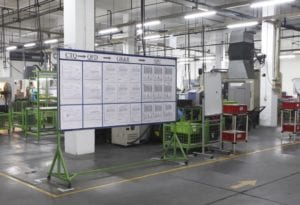
Die Casting Facility and Foundry
This was one of my favorite places in the Chervon factory tour. The ceiling in this foundry showed just how clean this facility was. It’s been open for 10 years, and there wasn’t any real discoloration visible above. Considering how much metal is formed and manipulated in the room—that’s a great testimony to Chervon’s efforts to keep their facility and air quality clean and safe.
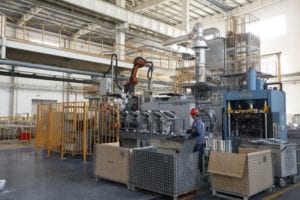
To give you an example of the workflow we witnessed on this part of our Chervon factory tour, one robot transported liquid aluminum (at over 1200 degrees F) to a machine which picked up smaller, specific quantities of the hot metal and poured it into an on-site furnace, and die casting. The machine then spit out the finished part, and the employee in the cell removed it, put it into a demurring fixture, checked for flaws, and stacked the finished piece in a cart. It was interesting watching robots and humans working, essentially, side0by-side to complete tasks that simply couldn’t not be done as effectively without the machine’s involvement.
Motor Manufacturing
One of our final stops in the Chervon factory tour was the motor manufacturing workshop. Chervon produces both AC and DC motors, including brushed and brushless models. Companies have to decide whether to “make” or “buy” these components. For high quality products the decision is usually to build the motor in-house.
This is also affected by the volume of parts needed for the product run.
On a typical brushed motor line, a single employee can now manage the entire line. Years ago this used to take a dozen to as many as twenty employees. Process control is handled by manually inspecting the commutators via microscopes. Chervon makes both outer runner and inner runner brushless motors, keeping their options open and enabling them to optimize the right solution for the proper application (For example, the inner runner motor allows for higher RPMs, and the outer runner is smaller and lighter in weight). This facility uses more of a lean concept of manufacturing process, the goal being the find the fastest production process as opposed to the cleanest process.
Conclusion
Being able to walk around and participate in the Chervon factory tour allowed us to get a great feel for how a larger factory produces a high volume of power tools reliably and repeatably. There’s a lot that goes into cordless and corded power tool production and understanding the backside of things did a lot to help the folks here at Pro Tool Reviews develop a more thorough understanding of how to test and evaluate tools once they get into our possession.

